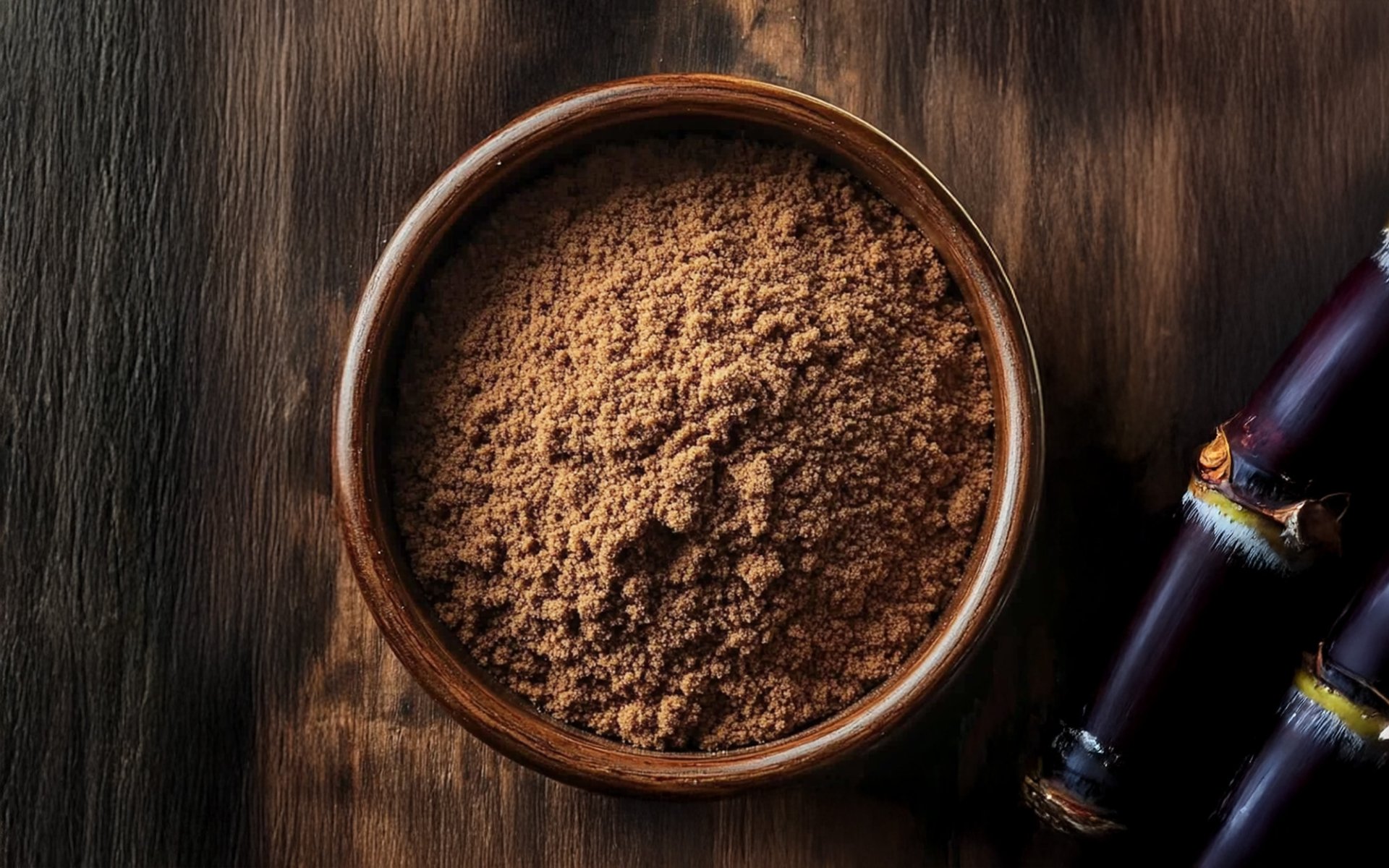Muscovado Sugar

Muscovado Sugar is a dark brown sugar derived from natural sugarcane, unbleached and unrefined. It has a fine, crumbly texture, a dark brown color, a distinctive aroma, and a rich, complex sweetness. It retains essential minerals from sugarcane such as iron, calcium, and potassium, making it popular among health-conscious consumers.
From Ancient Sugarcane to the Origin of Muscovado Sugar
The history of sugar begins with sugarcane, a plant believed to have originated in South and Southeast Asia approximately 8,000 BCE. Initially, sugarcane cultivation for sugar extraction spread widely in the Indian subcontinent and ancient Persia. The process involved crushing sugarcane, extracting the juice, and boiling it until it crystallized into solid sugar. These processes are considered the origins of various forms of sugar production, including Muscovado sugar.
Muscovado sugar has been produced since ancient times. It is made by boiling sugarcane juice until it thickens, without mixing other types of sugar. It is then dried and ground into a loose brown sugar. This traditional method effectively preserves the distinct aroma and flavor of the sugarcane.
Historically, Muscovado sugar was the primary sugar consumed domestically and a significant export product of Thailand, especially during the Ayutthaya and early Rattanakosin periods. Due to its large production volume exceeding domestic demand, vast quantities were exported overseas, even becoming Thailand's number one export product for a period.
Later, as the sugar industry developed and white sugar production technology was introduced, Muscovado sugar's role diminished due to its higher production cost (requiring 100% sugarcane). However, currently, with the health trend and demand for natural foods, Muscovado sugar has regained popularity because it retains its nutritional value and is free from chemical residues.
The Difference : Muscovado vs. Common Brown Sugar
- Muscovado Sugar: Is unrefined or minimally refined cane sugar. The traditional production process focuses on boiling and reducing sugarcane juice until it crystallizes, without significant removal of molasses. This results in Muscovado sugar retaining a high natural molasses content, giving it a dark color, a complex and rich flavor, and a distinct molasses aroma reminiscent of toffee or caramel.
- Common Brown Sugar: Most brown sugar found on the market is typically white refined sugar that has had molasses added back to it to achieve a brown color and flavor. The amount of added molasses is less than that found naturally in Muscovado sugar, thus it has a lighter color and less intense flavor than Muscovado.
In terms of nutritional value, since Muscovado sugar undergoes minimal processing, it retains higher amounts of certain minerals from sugarcane, such as calcium, magnesium, potassium, and iron, compared to common brown sugar (though it should still be consumed in moderation). Common brown sugar, on the other hand, contains only minor amounts of minerals from the added molasses, significantly less than Muscovado sugar.
Currently, there is increased production of organic Muscovado sugar in Thailand, emphasizing natural sugarcane cultivation without chemicals and traditional production methods to preserve nutritional value and meet the demand of the health market.
You can find Muscovado sugar at all Rimping branches.


